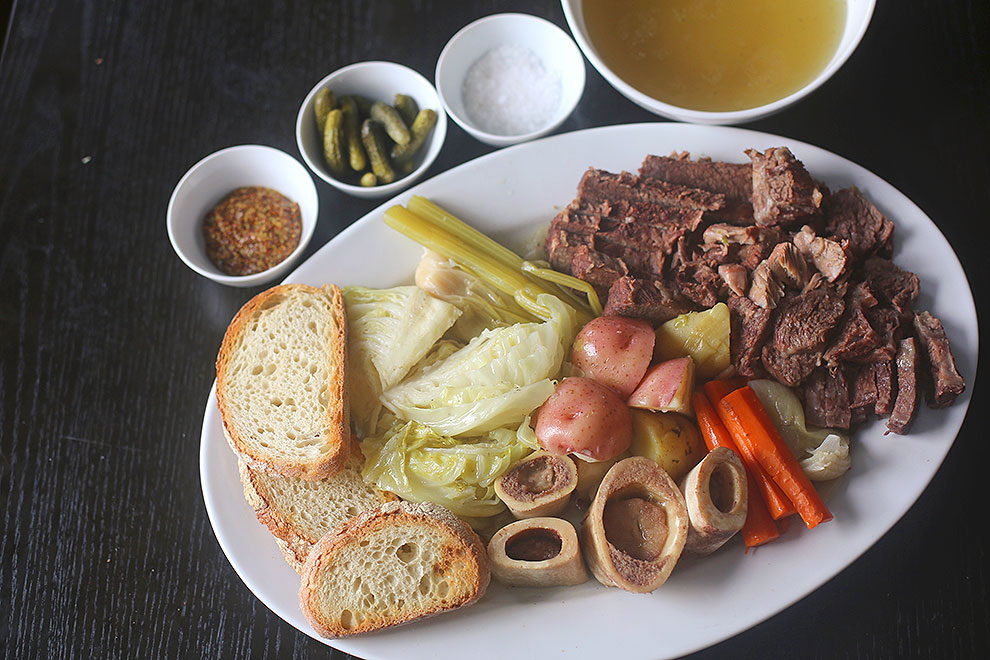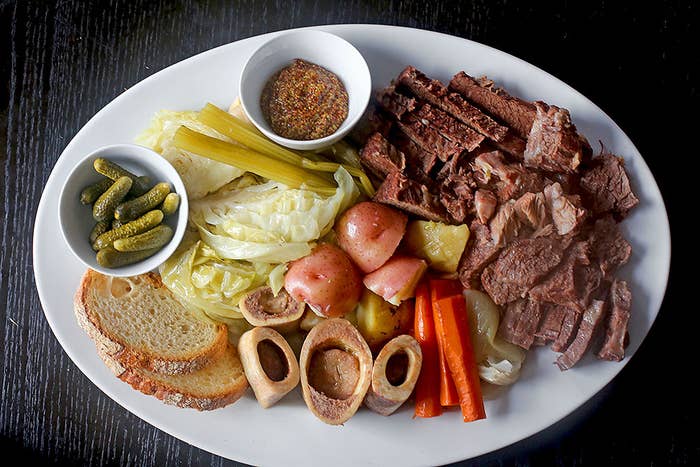
A few weeks ago, the stew-and-soup news ticker I had installed here at Winter Stew HQ started clattering something fierce. An archaeologist at Harvard had found out that the tradition of stew and soup making was at least 25,000 years old—20,000 years older than previously thought. This is relevant to today's stew, which is about as primordial as it gets: pot-au-feu. It's meat and vegetables boiled in water, eaten with bread. The ur-stew. And its caveman simplicity is what makes it great.
As the name suggests (French for "pot on the fire"), you need only two tools to cook pot-au-feu: a big pot, and a heat source. You don't even really need a knife. That's kind of awesome.
Just about every culture has some form of simple boiled-meat-and-vegetables stew. But the French are particularly fond of deconstructing theirs and eating it buffet-style, with toasted bread and toppings like strong mustard, salt, and pickles. This makes it a great dish for a group of people to enjoy together. Plus, the French love bone marrow. I hope you do too.
This takes a little longer to cook than our past stews, because the fat and gelatin released by the meat and bones over the course of a couple hours on low heat is what tenderizes the meat and gives the broth all its flavor. But nearly all of that time is unattended, so queue up Les Miserables or the dawn-of-civilization scene from 2001: A Space Odyssey on repeat and take it slow.
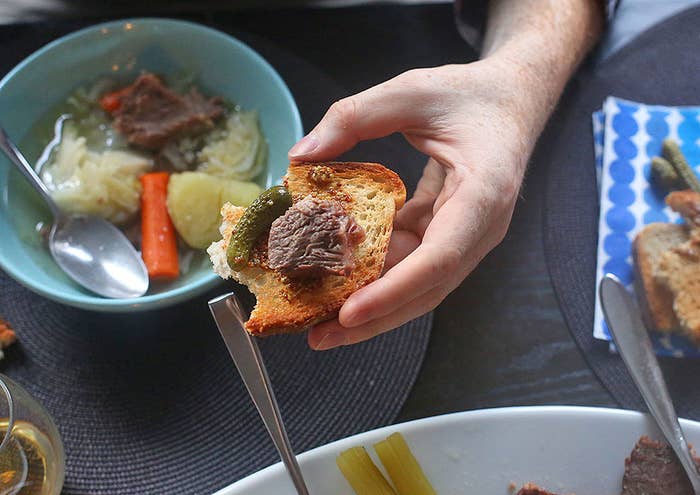
Pot-Au-Feu
Recipe adapted from Anthony Bourdain
INGREDIENTS
Meats: You can use a wide variety. Bigger, fattier cuts of beef like brisket and short ribs are traditional. But as long as it's something that can stand up to a long, slow cook, feel free to experiment. Also, try to include something smoked (more on this later). Here's what I used, which is enough to feed 6-8 people and more or less what's called for by Anthony Bourdain in his Les Halles cookbook.
1.5 to 2-pound cut of beef brisket, trimmed of its biggest chunks of fat (packaged corned beef briskets are OK too).
3-4 large beef short ribs, bone in (about 2.5 pounds)
1 beef shank
1 veal shank (just for variety's sake - either kind of shank will do)
4-6 sliced beef shin bone pieces, sliced horizontally (so they look like rings; they're often sold as soup or stew bones in the store. Ask the butcher if you don't see them; they're probably back there somewhere).
1 smoked ham hock, or a few links of smoked sausage
Vegetables:
2 large leeks, white parts only
4 medium potatoes (peeled or unpeeled), quartered
2 onions, peeled and quartered
6-8 whole cloves
Half a large head of green cabbage, quartered
4 carrots, peeled and cut in half
4 celery roots, cut in half
Bouquet garni:
10 sprigs fresh thyme
10 springs of fresh parsley
2 bay leaves
Garnishes:
Coarse Dijon mustard
Coarse kosher or sea salt
Cornichons or other pickles
Toasted bread
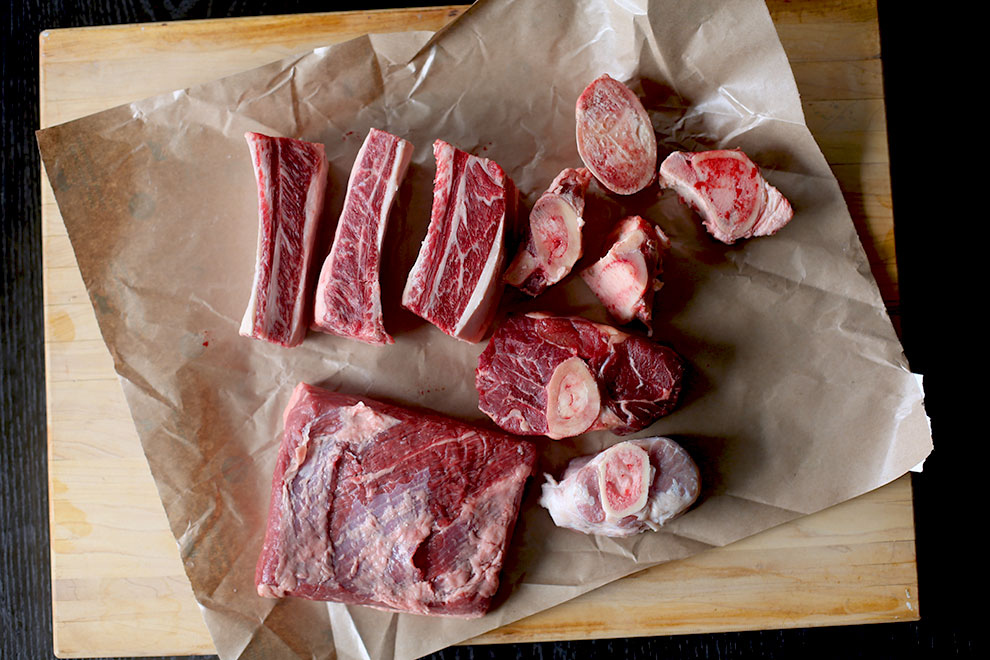
PREPARATION
1. Put all the meats in a large stock pot, cover with cold water, and bring to a boil.
2. While you're waiting for it to boil, chop all your vegetables. If you cut your leeks like this, they're easy to wash but will still hold together after a long boil:
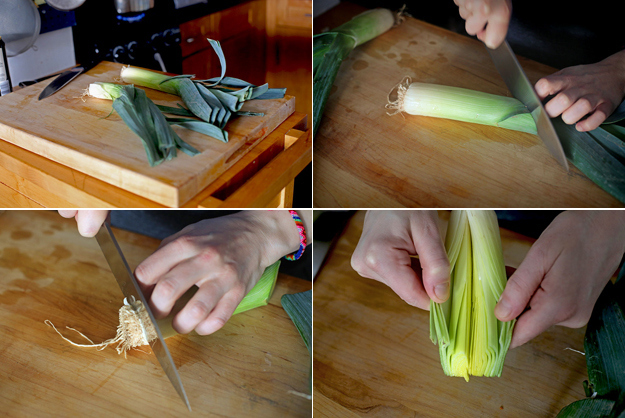
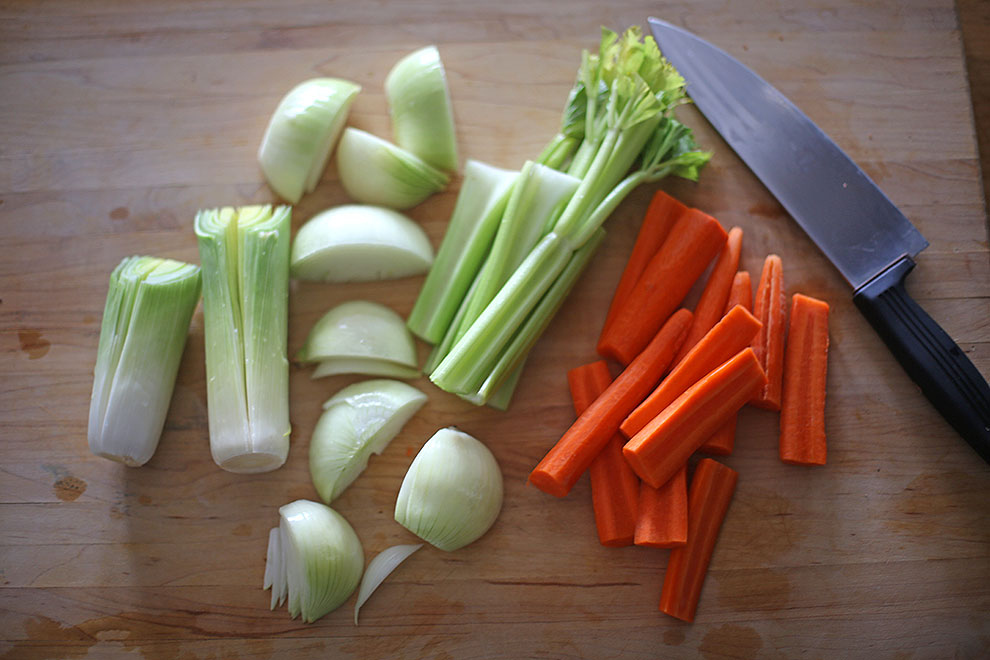
3. Once the water is boiling, remove the meats to a tray with tongs and discard the scummy water. Wash the scum from the pot. Seriously, WASH THE POT.
Not all pot au feu recipes call for this first step, but it's a great way to take a lot of the gross scum-skimming out of the whole process from the start. So don't skip it.
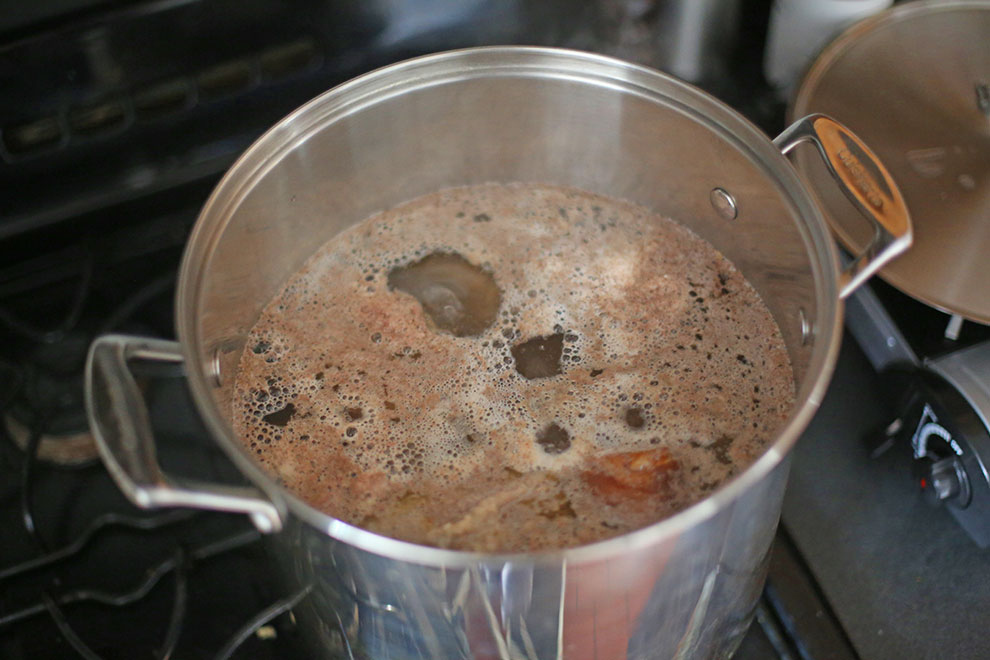
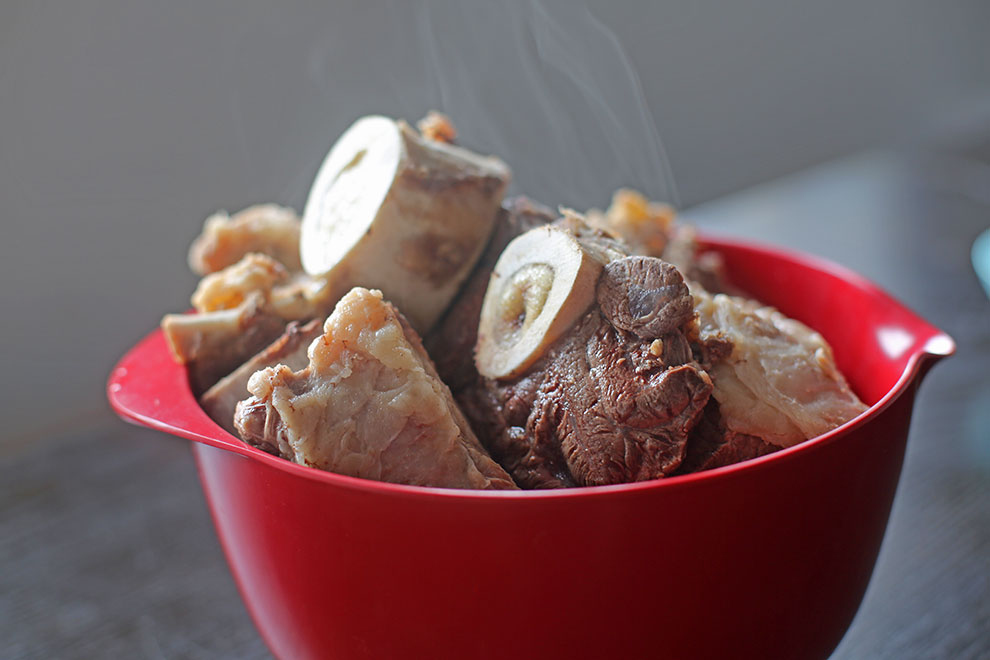
4. Put all the meats back in the cleaned and rinsed pot. Stick a few cloves in the onion quarters, and throw those in. But first notice how they sort of look like a face now.
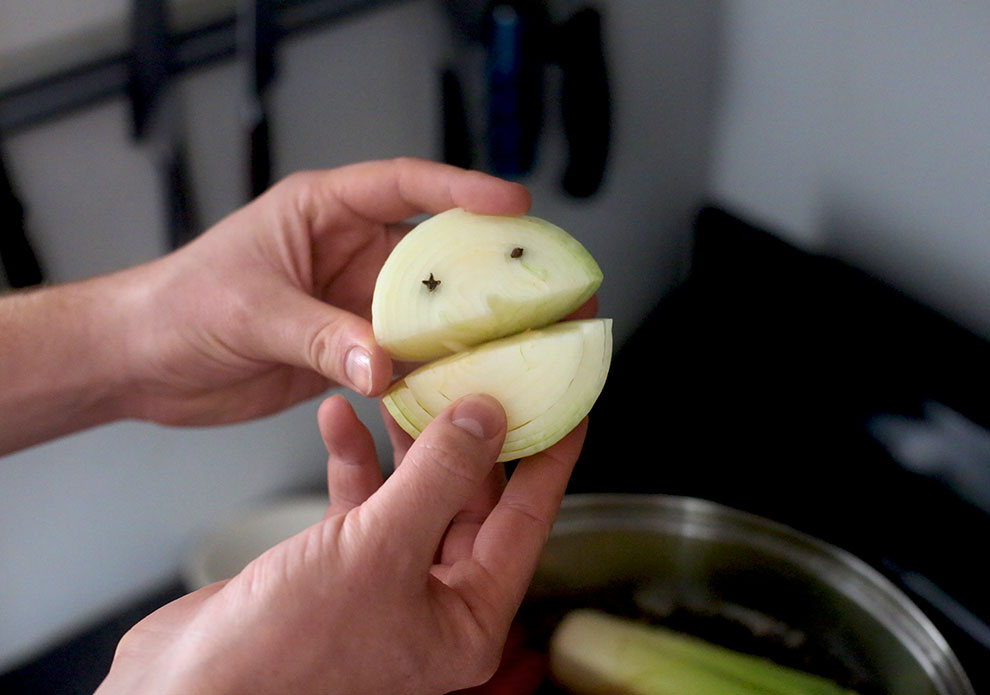
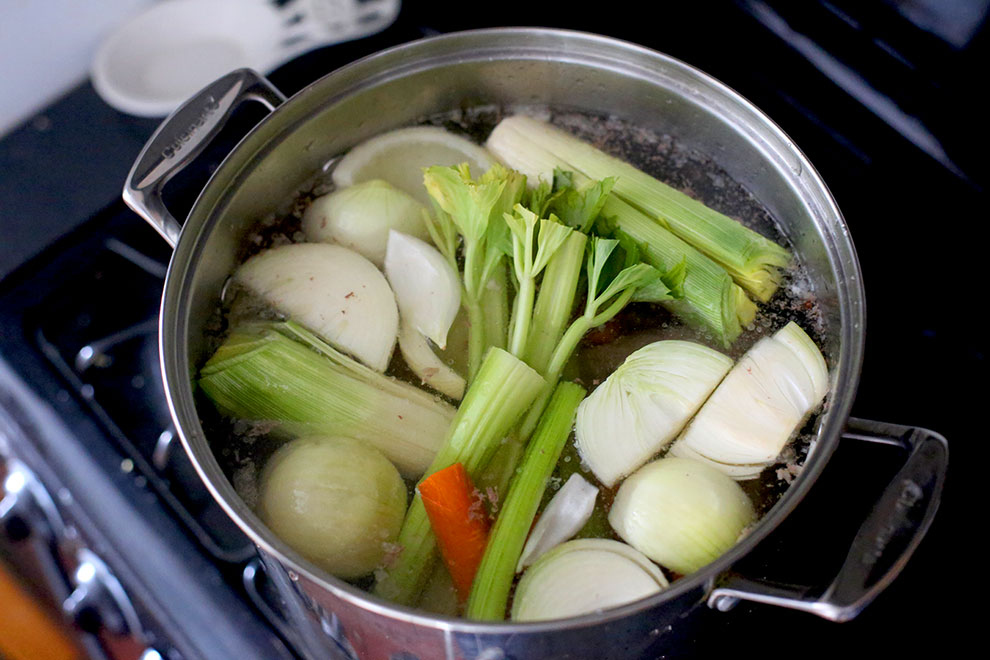
Also throw in the celery, carrots, leeks, and your "bouquet garni" (the parsley, thyme and bay leaves, tied together with string so it's easy to remove at the end).
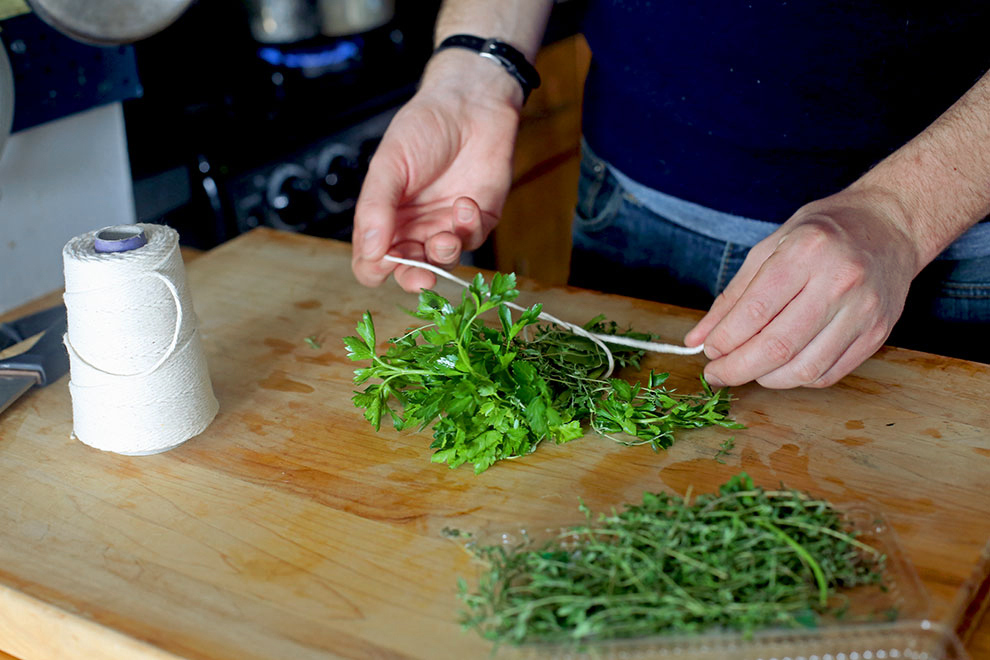
5. OH WAIT, don't forget this:
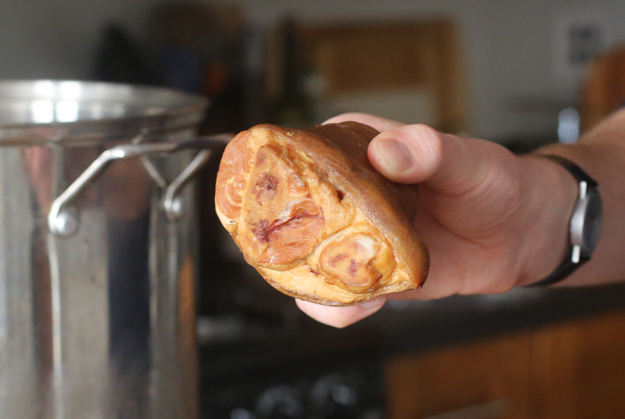
Tossing in a smoked ham hock imparts a delicious wood-fired flavor to the proceedings, in keeping with the prehistoric theme. A big chunk of slab bacon or a couple links of smoked sausage like kielbasa would also work!
6. Fill the pot with cold water until everything is submerged by an inch or two (we're adding more things later), and bring this slowly to a simmer. Once it's bubbling, keep it on low heat for around 2 to 2.5 hours total, occasionally skimming out any foam or scum from the top of the pot.
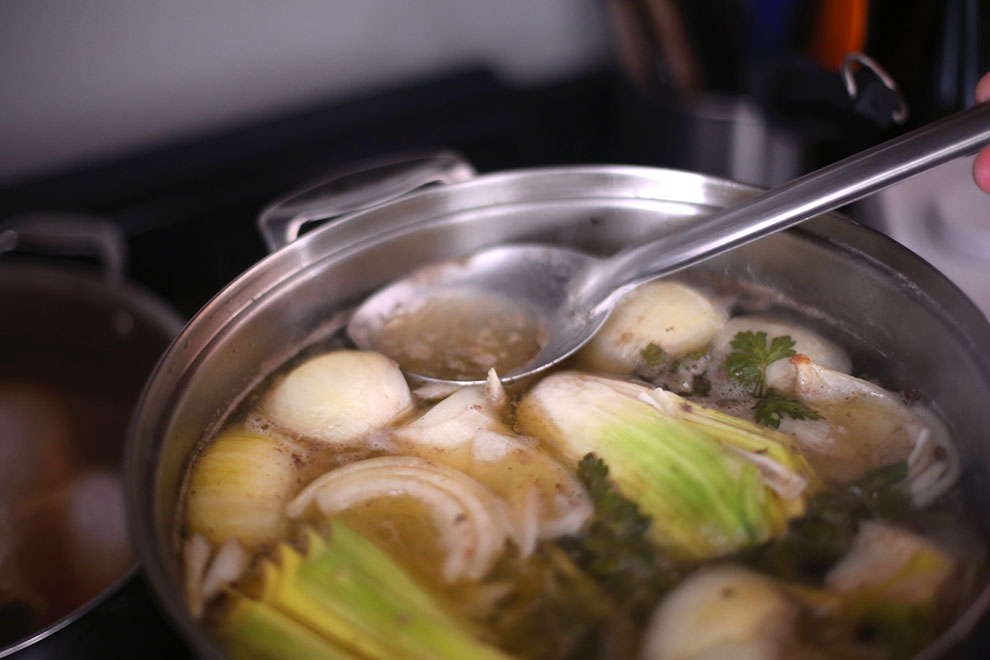
7. With about 30 minutes remaining in your slow simmer, throw in the cabbage and potatoes. That way, they don't disintegrate. This is also a good time to taste the broth and season with salt and pepper. It'll take a lot of salt to season this much water—several tablespoons, most likely. Add it slowly, stirring carefully so as not to break up your meats and vegetables, and keep tasting to make sure you don't overdo it.
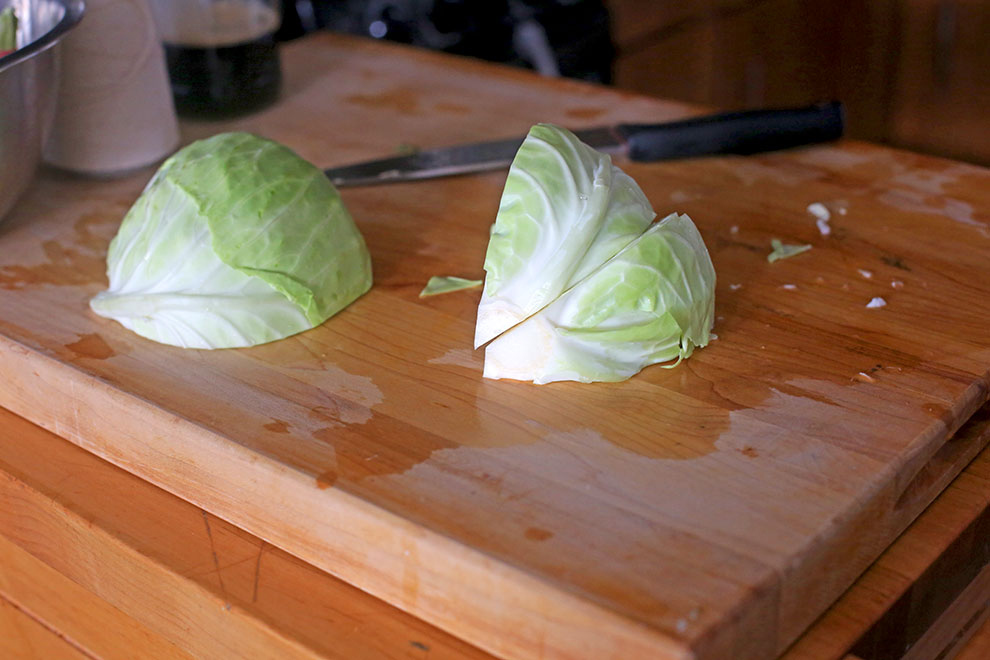
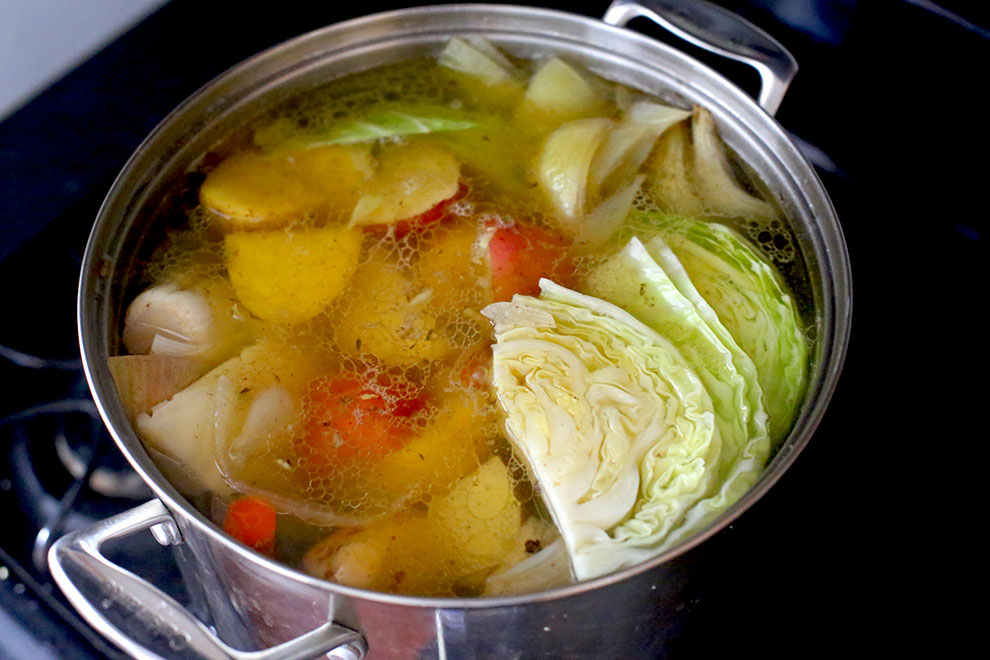
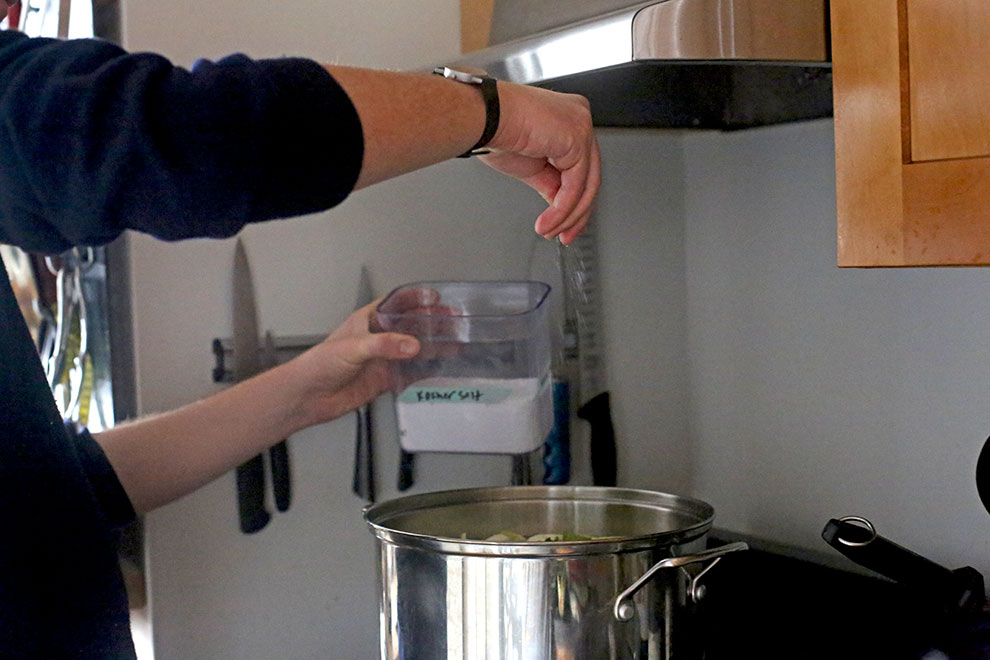
8. When the potatoes and cabbage are tender, your stewing is complete. Remove the vegetables to a serving platter (carefully, so they don't all fall apart), and cover with a ladleful of the broth to keep them warm.
9. Carefully remove the meats and bones to a cutting board with tongs. Remove the bones and cartilage from the short ribs, and slice the meat against the grain.


10. Slice the brisket against the grain:
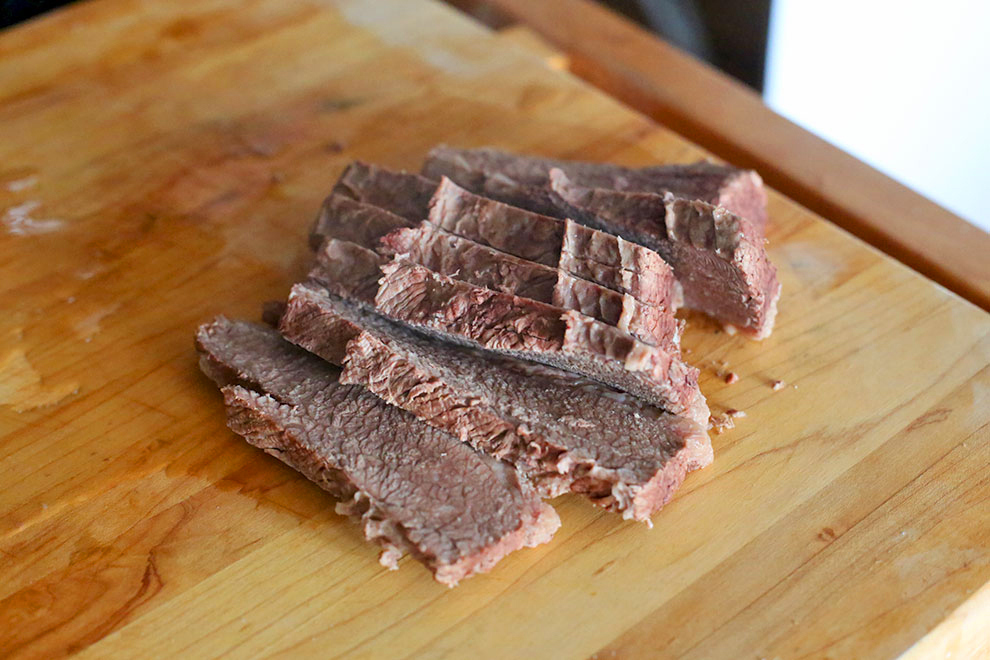
10. Remove the meat from the shanks and shin bone parts, saving the bones for their marrow.
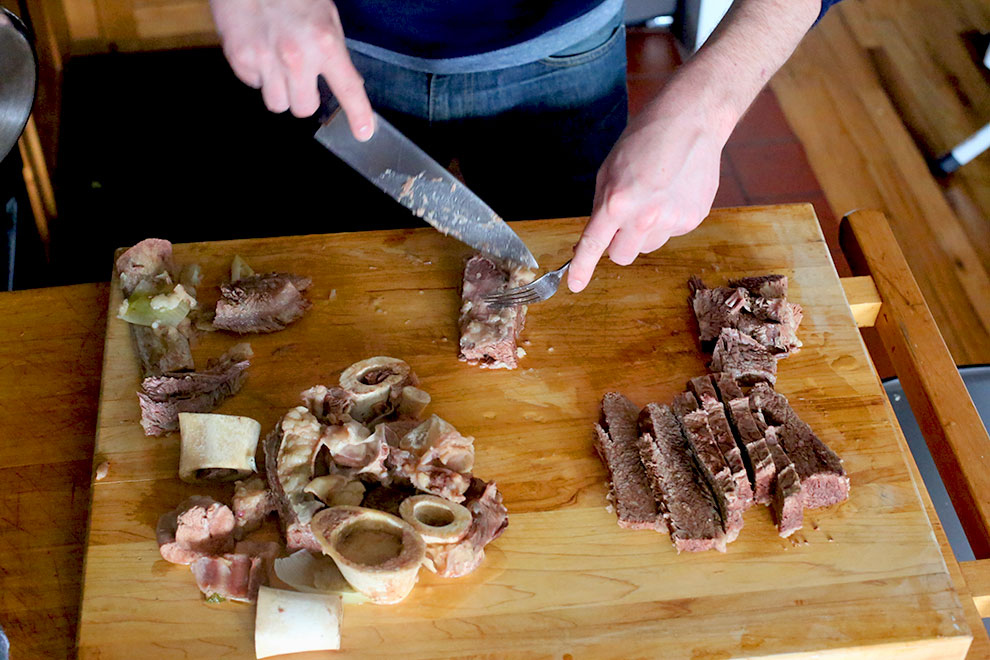
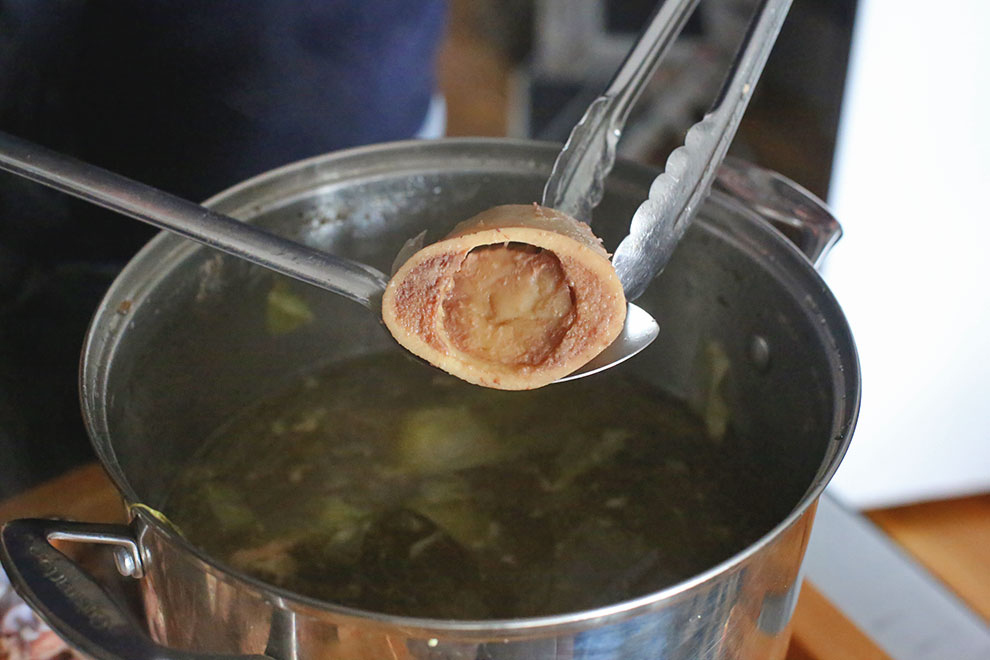

11. Strip off any good meat on the ham hock (ours was pretty fatty and not that appetizing) and then discard the bone.

12. Strain however much of the broth you want to eat into a serving bowl or into everyone's individual bowls, and check its seasoning again.
12. Make toast. The first thing you're going to want to do is scoop some of the bone marrow out and put it on the first slice of warm toast, with plenty of coarse salt. This is SO GOOD.
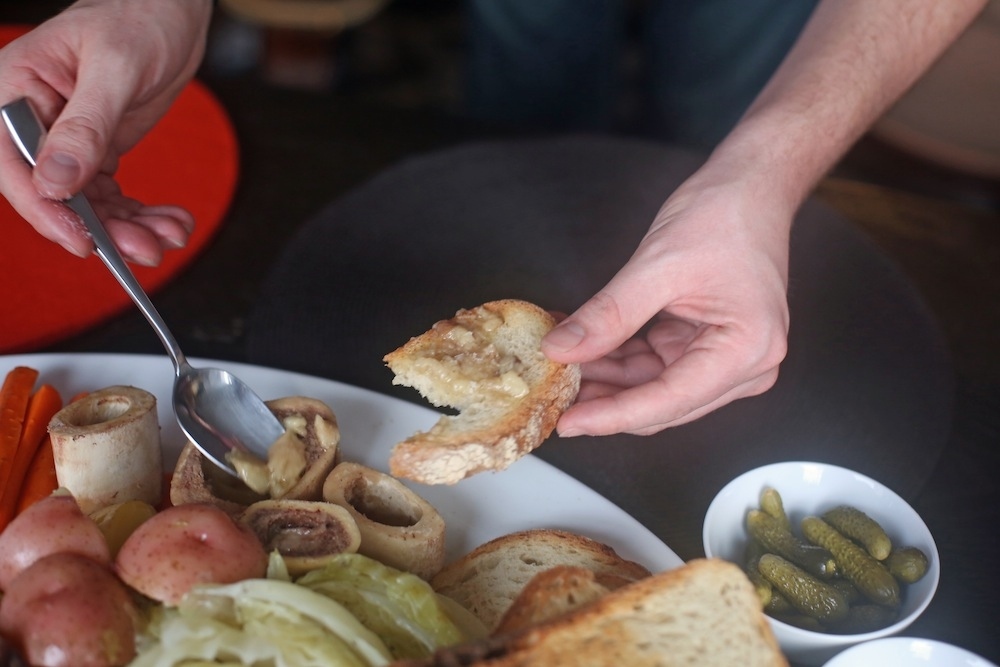
13. TO THE TABLE! Give everyone plenty of toast and a bowl of broth, and eat everything buffet-style with plenty of mustard and pickles.
